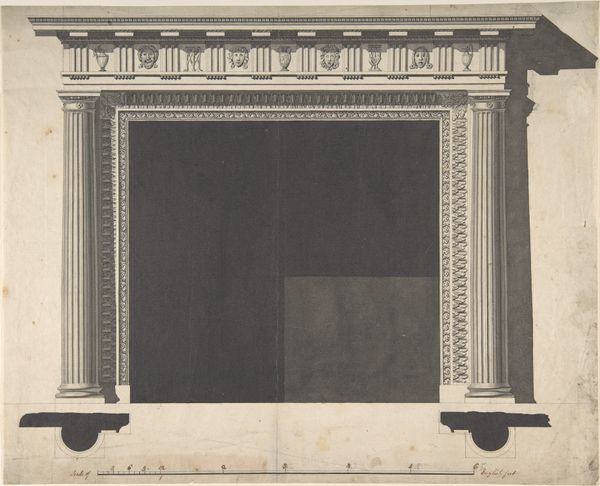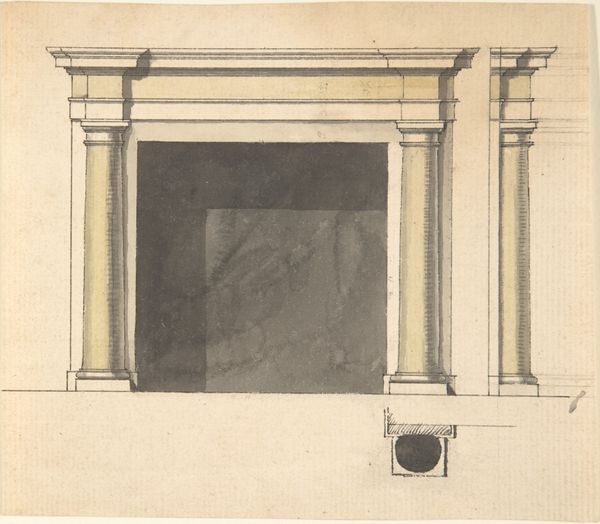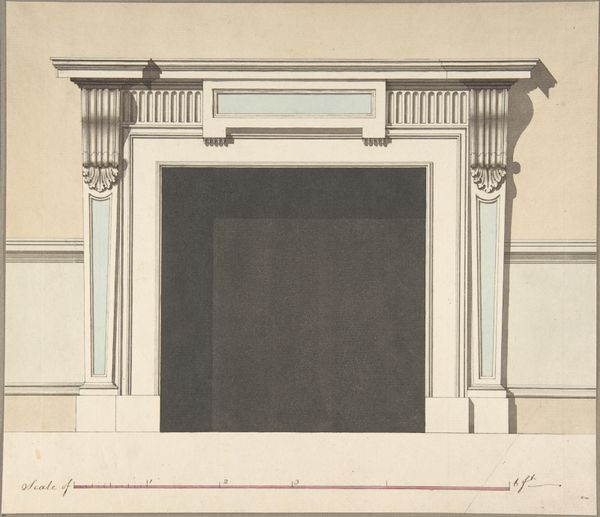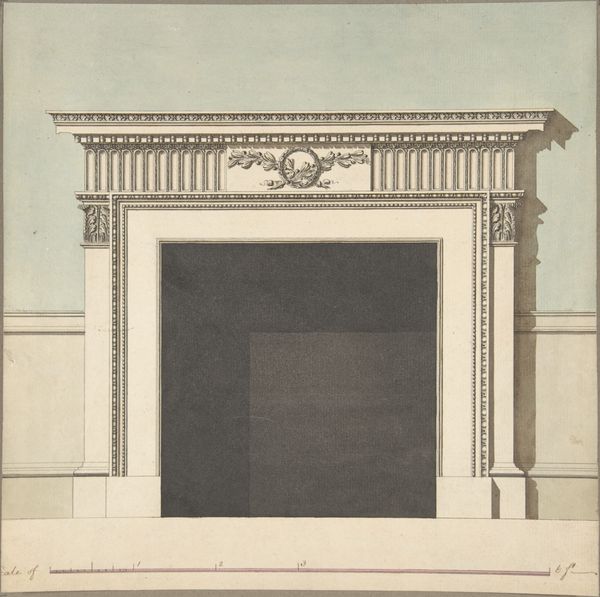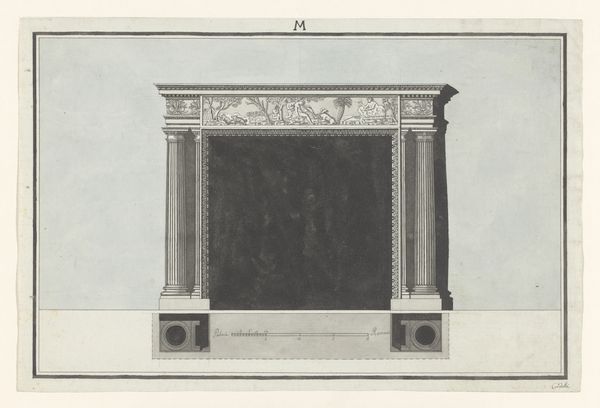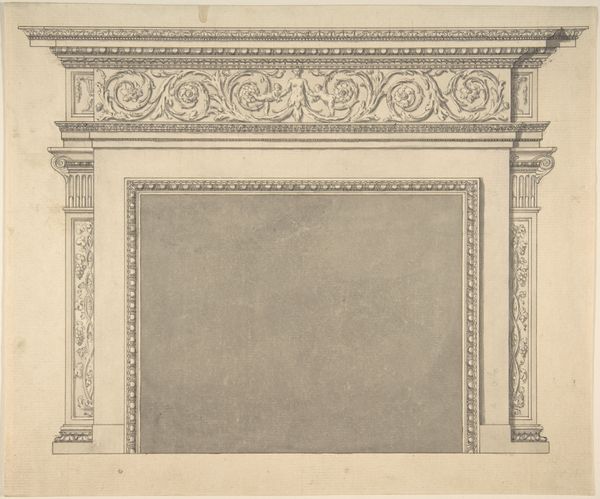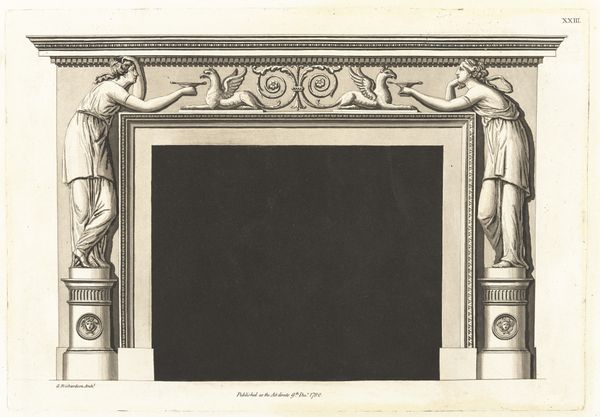
Design for a Chimneypiece with a Classical Cornice, for Ampthill Park, Bedfordshire, Dining Room 1764 - 1774
0:00
0:00
drawing, print, architecture
#
drawing
#
neoclacissism
#
muted colour palette
# print
#
landscape
#
form
#
geometric
#
line
#
academic-art
#
decorative-art
#
architecture
#
statue
Dimensions: sheet: 8 3/8 x 11 3/4 in. (21.3 x 29.8 cm)
Copyright: Public Domain
Curator: This is Sir William Chambers’ design for a chimneypiece in Ampthill Park’s dining room. It dates from 1764 to 1774. Editor: Stark. Beautiful in its rigid order, but undeniably stark. What is most striking is the perfect symmetry and how that huge, dark rectangle of the hearth dominates everything. Curator: Indeed. Let’s consider the neoclassical structure, pure in its architectural form. Observe how the geometric volumes relate, one echoing the next, moving upward toward that heavily adorned cornice. Editor: Those details above – the rosettes alternating with the bovine skulls…that contrast is interesting. Rosettes, symbols of love, beauty, and the briefness of life…juxtaposed with skulls that denote sacrifice, power, and, of course, death. Even in design, there's cultural weight. Curator: Precisely. Chambers balances function with the formal language of neoclassicism. The piece invites reflection, asking us to decode its purpose within the room’s greater whole. Notice also, the clean lines create depth with understated power. Editor: Yet even the concept of "understated" here plays into the elite social mores of the time, wouldn't you say? A demonstration of control over overt displays of wealth through refinement of classical themes and appropriate displays of power in the household. Curator: Absolutely. The architect isn't just designing; he's staging a whole philosophy of control and proportion. Editor: Power and refinement. Thinking about the original context - I can just picture a gathering in that room, around the fire. Curator: In summary, the composition of the chimneypiece is the embodiment of control and the artist creates the perfect geometric structure and architectural statement. Editor: So, a quiet conversation piece designed to provoke the well mannered to discuss something less quite. Thanks for the analysis.
Comments
No comments
Be the first to comment and join the conversation on the ultimate creative platform.
